
|
Vol 71 |
Page 20 |
Privacy Policy | Editorial Policy | Profit Policy | Join the Association | List of Members | Contact us | Index | Links
Back Go to page: 1 2 3 4 5 6 7 8 9 10 11 12 13 14 15 16 17 18 19 20 Back to Start
Contents:
APPY Celebration at Wagga - ANZAC Day 2021.
Council rejects Caloundra RSL Memorial Garden Petition.
RAAF Telstech Association.
It's that time again, to remind you that the RAAF Telstech Association was formed to keep all ex-Telstechs in touch with one another and to advise anything which may be of interest. To successfully keep the association going, it costs money and therefore, I respectfully request your help in this respect. $10 per year will get you all the information I can gather and access to the Telstech's web site (If you are connected to the Internet).
Your $10 will help us to pay for our own domain name - www.raaftelstechs.org.au and for postage to those who aren't connected to the Internet. If your name in the Telstech list shows a + or a ++, you are a financial member, (+ for one or more years, and ++ for Life Member). Don't forget, that if you are a bit flush with money, $100 will get you Life Membership of the Association.
Please send your contributions to:
|
|
By Post
Mr NF Miller RAAF Telstechs Association P.O. Box 4329 HAWKER ACT 2614
|
By Electronic Funds Transfer
BSB No: 833 205 Acct No: 2060 9660 Acct Name: RAAF Telstechs Association Acct held at: Defence Bank
|
Please make cheques and money orders out to the 'RAAF Telstechs Association'. If you are making an electronic funds transfer, don't forget to include your name, so we can keep the records straight.
Don't forget to let me know of any changes in your details, so I can keep the Telstech list up to date. As time moves on, we get a little older and some of our friends move on to the next life. Unfortunately, we lost several of our members in the past 6 months,
Ron Fryer (1TTC 1953), Henry Szumlanski (8TMT), Norvile (Norm) Simpson (1TTC 61/62), Eddie Collas (2TTC 54/55) and Bob MacDougall (9TMT).
Functions.
Due to the ongoing Covid 19 virus, there are no functions planned in the near future..
Getting Older.
Unfortunately, after my plea to consider taking over the reins from me in managing the correspondence and records of the RAAF Telstech Association, I have received only one 'nibble'. Please give this very important request your 'undivided' attention. The database is MS Access, and the web site is simple - web site is hosted by Host Papa and domain name registry is Netregistry.
That's about it till next time.
Neil Hunter
WRAAF Qld reunion.
Lyn Mitchell
Hello All,
Many of you will have already heard that the WRAAF reunion organised by the Queensland Branch has been cancelled, however, not everyone has a Facebook account so I thought I would try and communicate to those who have missed out. Janet Noak advised this week, that due to Covid-19, the committee reluctantly decided to cancel. Though I did have accommodation booked, I was feeling decidedly uncomfortable about the trip up given my failing health. I think many of us would be in the same predicament. Until a vaccine is found, we all have to be cautious.
For those unaware, the reunion was to be held on 14/15/16th January 2021. However, not all is lost as Trevor Benneworth is organising an event over the Anzac weekend of 2021 for Radschool people, but really anyone can go. I am hoping to be able to go. More details of accommodation in the coming weeks. Also, Trev has organised another event for June 2021. A wonderful opportunity to feel young again, or perhaps look on - through the outback of Queensland.
I have added a few RAAF to my list in the hope that this gets through the grapevine. Many of you have not heard from me for some time. Life does get in the way a bit for all of us. But many of you have made my time on this globe quite wonderful. But the best thing is that we all have a common vein through our bodies; one that just oozes Service Life. The sticky glue that keeps all of us family, even if it's through a keyboard and screen in this digital age. At least we have lived to embrace the wonders of technology.
Keep well everyone.
36RAC.
Neil Snudden writes, he says: Hi, I was on 36RAC and am trying to arrange a reunion in 2022 to celebrate 40 yrs since joining. Do you know of any plan for RADS reunions in 2022 that 36RAC old boys may be able to join?
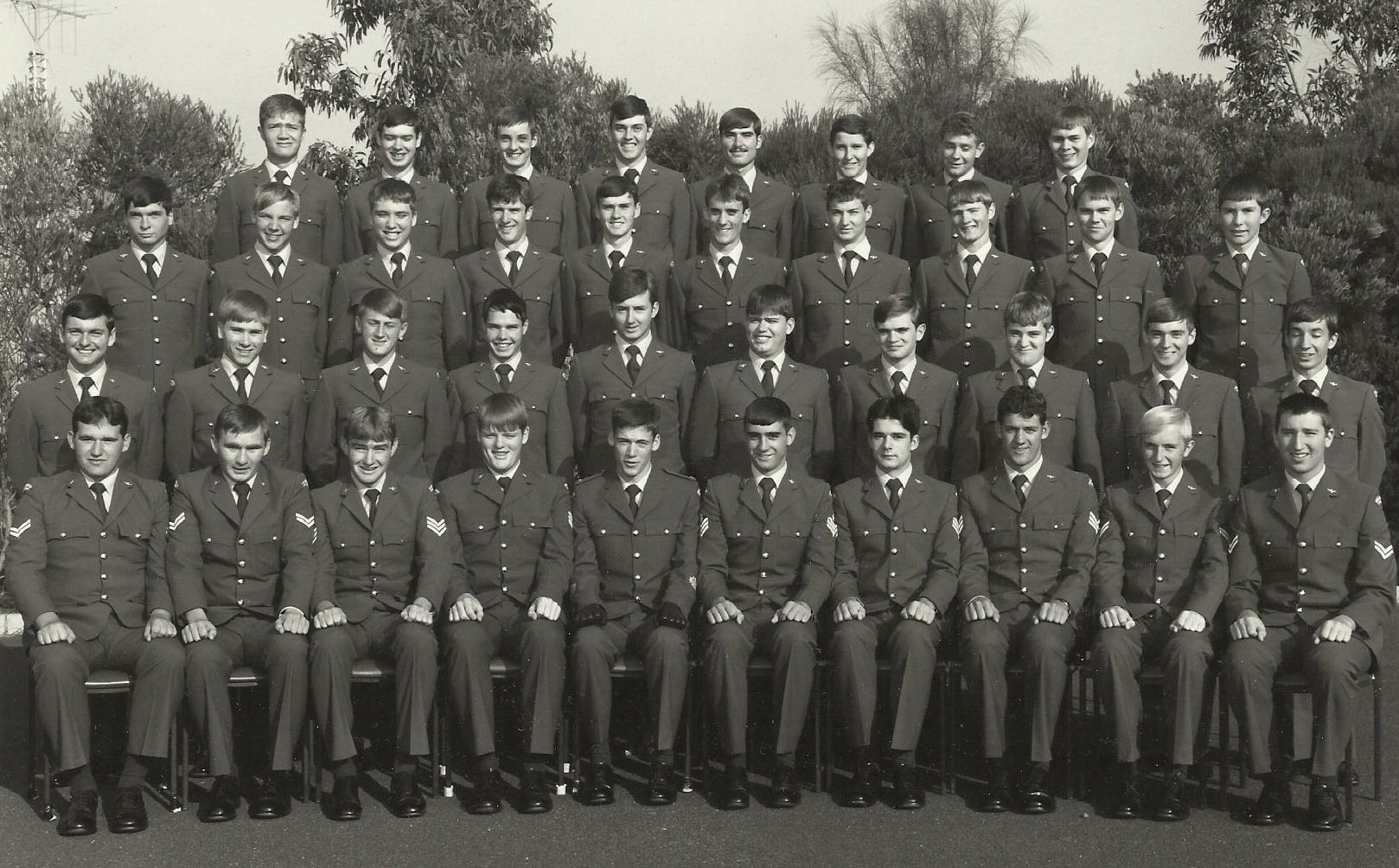
If anyone can help, let us know and we’ll pass on the info to Neil.
DFRDB Commutation Update.
Ken Stone
Hi Superannuants
I do hope you are avoiding the dreaded virus and also not getting tired of just your own company.
Although I haven’t been in touch in recent times there has been quite a lot of outgoings from my office but not too many incomings through the email system. However, following some excellent representations by Llew O’Brien, after four months we finally elicited a response, ostensibly from the Prime Minister. This was simply the party line as espoused by Minister Chester and no doubt prepared for signature by SCOMO by one of his staff.
I have also written to the Ombudsman, but now hear that he has gone to ground and will not respond to anyone regarding his Report, that I understand may be up for a literary award as a work of fiction. Similarly, no response from, Minister Reynolds, Minister Chester et al, all of whom have been recipients of correspondence submitted on your behalf. Additionally, received a call from Senator Molan advising that he can see no way of providing any additional support. I also wrote to all the ESOs that have Minister Chester’s ear, to no avail except from just none of the addressees responded. So, the saga continues. I also wrote to the new CEO of COMSUPER to which I received a response from one of his minions, who seems to have circumvented the delivery system before he received my correspondence. It is now on a rerun. I have also been in touch with ING Bank and requested a full investigation of their handling of the Pledge scam. If you have not had your donation to the hacker refunded please advise me of details including your bank and the amount of your loss.
I have recently enlisted the support of a preeminent Australian who will provide advice on our issue after he researches the matter further. Lastly the following was directed to the CEO of the Sydney Ethics Centre together with the attachment. If he returns a positive response to this matter, we may well be able to use it to sway a positive decision from Government or use it for media attention to our issue:
Dr Simon Longstaff AO
The Ethics Centre
Sydney NSW
22 July 2020
Dear Dr Longstaff,
After three years in representing some 55,000 long-serving Defence Force Veterans, which resulted in an Independent Inquiry by the Commonwealth Ombudsman, I bring to your attention the issue of Life-Term reduction to the Superannuation Pay of these Veterans by the Commonwealth Government.
Since the release of the Ombudsman’s Report last December I have been faced with nothing but the closed doors of Government in trying to obtain justice for these ageing Veterans. This is because the Ombudsman, who found no mal-administration by the DFRDB Authority of the now Commonwealth Superannuation Fund, that I contend was guilty of deception through Exclusionary Detailing, from the outset of the Scheme. Although the Ombudsman found the Department of Defence guilty of mal-administration and deceit, he determined that just a written apology was necessary, and no reparations were due to these Veterans and their families. This was duly accepted by Minister Chester as a just solution who declared there would be no change to the operation of the Scheme.
I have prepared the attached paper on the bare facts of the matter, which is an issue complicated by 50-years of ducking and weaving by the Authority and the succession of Ministers who have held the Veterans Affairs portfolio, despite the thousands of flags raised by Veterans regarding the assault on their Superannuation benefits well beyond their expectations.
I would greatly appreciate your response regarding the ethics of our case, as perhaps the final means of appeal, before considering legal action far beyond our financial means.
Yours sincerely,
See attachment HERE
Lastly, I had an enquiry from one of our Superannuants as to whether it was appropriate for him to approach his local member regarding the material distributed by this Campaign and about our issues with DFRDB Commutation. My advice to him was the sooner the better and to take along a bunch of his mates to the Local Member’s Office and to let the local media know of your meeting with him, protesting the ongoing sacrifice of your Superannuation Pay.
I seem to be a single voice on this matter. I suggest we should all go to choir lessons and sing from the same hymn book about our grievance. We need to be rattling political cages in the flesh and any other appropriate means – send letters, make phone calls, badger the Minister and the DFRDB at COMSUPER. Ask the question : How much is my Superannuation Pay being reduced annually, over and above if I HAD NOT OPTED FOR A COMMUTATION?????
Meanwhile, stay safe, stay well and wear your mask!

100th Anniversary of RAAF Reunion.
Wagga April 23rd to 26th 2021
Bob Gnezdiloff (Treasurer of Aircare Wagga Wagga) has confirmed that (subject to Covid19 restrictions) the Anniversary of RAAF Reunion event will be proceeding. However due to the significant uncertainty posed by Covid19, Bookings for the event will not open until the 1st of January 2021.
From that date bookings will open on the RAAF Apprentices website.
Tickets will be limited so ensure you book early.
TIMELINE OF EVENTS (Note date change of the celebration dinner)
Friday 23rd April 2021 Time TBA
Meet and Greet at the Range Centre 308 Copland Street Wagga - cost TBA
Saturday 24th April 2021 Day Time (TBA)
Bus trip to Temora Aviation Museum (and hopefully a flying day at the museum) - cost TBA
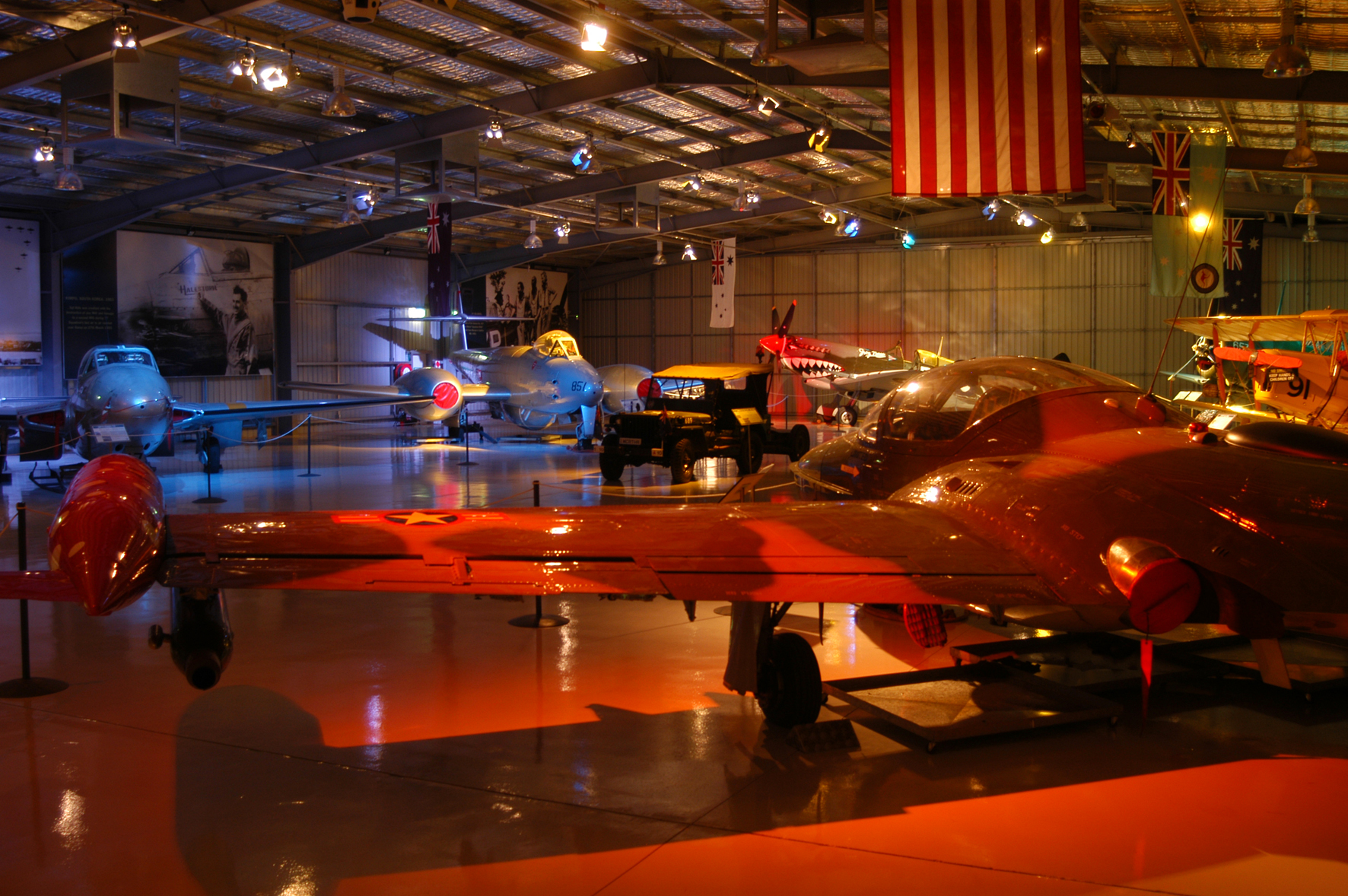
Saturday 24th April 2021 Evening Time TBA
Celebration dinner at The Range Centre - cost TBA
Sunday 25th April 2021 ANZAC Day Dawn Service
Dawn Service for those wishing to attend at either Kapooka, RAAF Wagga or the main Wagga Cenotaph which is located in Baylis Street next to the lagoon.
ANZAC Day Main Service and march. 1000 Hours - Main Anzac Day March from location TBA to the Wagga Cenotaph
Monday 26th April 2021 Time TBA - Tour of RAAF Base Wagga and Heritage Museum (subject to approval)
More information will be emailed to you as soon as it becomes available. There is plenty of free time during this event for individual intakes to make their own arrangements to gather for more intimate reunions.
Ticketing for the event will be via the RAAF Apprentices website. We will email you when Registration opens on the 1st January 2021. Be advised that tickets to this event will be limited.
As a side note you will need to be logged into the website to purchase tickets. So, if you haven't already done so sign up now! If you have any questions or queries you can give me a call or text me on 0499 229911 at any time.
Dutchy Holland
President
RAAF Apprentices Association
Council rejects Caloundra RSL's Memorial Garden petition
Thank you for signing the petition to save the Caloundra RSL Memorial Garden from virtual destruction by proposed roadworks. Cr Terry Landsberg tabled the petition at the Sunshine Coast Council meeting on June 25 but the response from the Transport and Infrastructure Planning department was negative.
It said the Council had determined that the Third Avenue "upgrade" was the best option because the Arthur Street option would still require upgrades to Third Avenue and Oval Avenue, however it was short on details and did not explain WHY such upgrades would be needed.
We will continue seeking this information.
The Sub Branch owes a huge “thank you” to local State MP Mark McArdle for his terrific support and guidance with this process, to Cr Landsberg for supporting the petition and to every person who signed the petition – this support is invaluable.
Read the full letter HERE and respond to Council if you feel strongly enough.
The fight is not over! Lest We Forget

The Douglas C-124 Globemaster
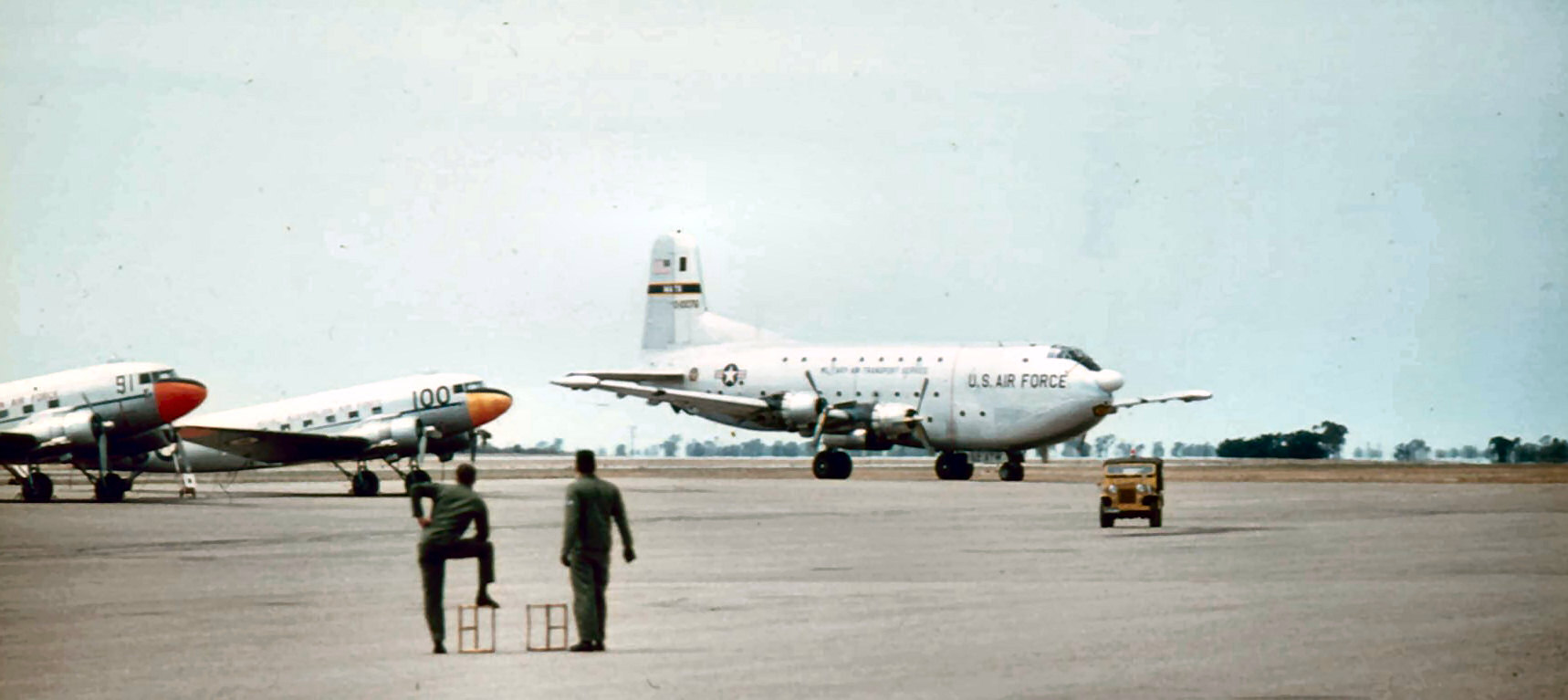
Phil Tracey took this pic when he was at East sale – must have been in the late 60s as I can remember the old Globemaster coming into Richmond at about the same time. They always looked as if they were so underpowered that they wouldn’t or couldn’t fly – but they did – sort of!
The amazing Saturn 5 rocket.
The Saturn 5 was the largest rocket ever built by the United States. A true monster of a launch vehicle, it generated over 33 million newtons of thrust at liftoff and carried 2.5 million kilograms of fuel and oxidizer. If the Saturn 5 exploded, it could do so with the force of a small atomic bomb, the equivalent of half a kiloton, or about 1/26 the size of the bomb that destroyed Hiroshima. Naturally, this was a significant concern for Apollo program officials.
During the course of the Apollo program, NASA officials conducted several studies to evaluate the effects of the ultimate worst-case scenario, a launch pad explosion of a Saturn 5 rocket. This was the worst possible accident for several reasons. The Saturn was most loaded with fuel at that point and posed the greatest danger to people on the ground. It also presented the fewest abort options, requiring the firing of the Launch Escape System (LES) rockets that would blast the Command Module away at high acceleration.
Early in the Saturn development phase, NASA officials had carefully selected a launch site that was sparsely populated and where the actual launch pad could be isolated from other necessary facilities such as the Launch Control Centre. They selected sites on the Atlantic coast of Merritt Island, surrounded by swampland and beaches. In 1961 and 1962 NASA planners decided the locations of physical structures for the two Saturn 5 launch pads and designated the pads Launch Complexes 39A and 39B. Because of the pads’ isolation, after 1962 Saturn designers were less concerned about the damage that a launch pad explosion could do to the surrounding area than they were about the damage that an explosion could do to the astronauts who were trying to escape it.
In September 1963, NASA conducted a short study of Saturn 5 booster explosion hazards and how they affected the survivability of the Apollo spacecraft. Titled “Saturn 5 Booster Explosion Hazards and Apollo Survivability Analyses,” the study focused on an on-pad explosion and its authors calculated the propellant weights in each of the three stages and determined their equivalent weight in terms of TNT, a common means of establishing a benchmark for explosive yields. The study’s authors concluded that there was the equivalent of 222,000 kilograms of TNT in the S-IC first stage, 253,000 kilograms of TNT in the S-II second stage and 68,000 kilograms of TNT in the S-IVB third stage. Although the propellant weight of the first stage was considerably higher than the second stage, the second stage’s explosive yield was greater because it utilized more explosive liquid hydrogen and liquid oxygen. The S-IC first stage was fuelled with liquid oxygen and kerosene. The third stage, although also powered by liquid hydrogen, had far less fuel than the S-II stage.
Together, the three stages had a theoretical maximum explosive yield of 543,000 kilograms of TNT, or a little over half a kiloton, to use the terminology common to nuclear weapons. Based on existing data, the study’s authors felt that it was unlikely that all of the fuel in the Saturn 5 would be consumed in an explosion, however in previous on-pad explosions of other liquid-fuelled rockets such as the Atlas and Titan, significant amounts of fuel fell to the ground and burned long after the initial explosion. In the case of the Saturn 5, this was most likely to occur for the heavy kerosene in the S-IC first stage. The figure of 599 tons of TNT is therefore an absolute limit and the study’s authors suggested that the likely yield was probably only 60% of this, or around 400 tons. Rocco Petrone, the Saturn launch director, estimated that the real figure was more likely to be 300–400 tons.
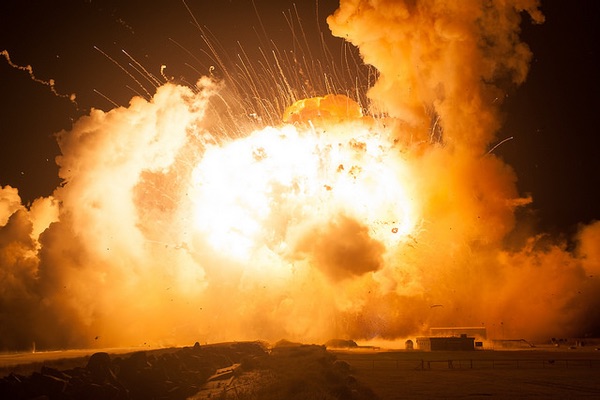
Even this lower yield explosion would have completely destroyed the launch tower, the Mobile Transporter and significant parts of the launch pad itself. The detonation of the hydrogen and oxygen in the S-II second stage would have created a tremendous blast wave close to the launch tower, knocking it down. The fuels would have caused fires in the surrounding vegetation and killed animal life for miles around.
Some sense of the possible devastation can be surmised based on the results of the July 3, 1969 launch pad explosion of the Soviet N-1 rocket, which detonated with an estimated force of 250 tons of TNT. The explosion completely destroyed one of the launch pads and shattered windows nearly 30 miles away.
The September 1963 explosion hazards study divided the hazards from a Saturn 5 explosion into six categories: overpressure, dynamic pressure, fire, acoustic intensity, shrapnel and impulse. Overpressure is the blast wave that is formed when the atmosphere surrounding the explosion is forcibly pushed back. The study’s authors considered overpressure to be the primary and most immediate threat to the Command Module in a sea-level (i.e. on-pad) explosion, although dynamic pressure from an explosion, the actual dynamic load imposed on the vehicle, became a greater threat than overpressure at high altitude, approximately 95 seconds into flight.
The study assumed that an overpressure greater than five pounds per square inch (psi) would destroy the Apollo spacecraft. Because the S-II stage had the greatest explosive yield, that stage dictated how far the Command Module had to travel in a launch pad explosion to avoid the shock wave, which diminished over distance. The distance requirement for the S-II was 317 meters but because the Command Module was already 43 meters from the assumed centre of the explosion in the S-II, the Command Module only had to travel 274 meters to escape the lethal overpressure wave and therefore survive the explosion.
The study’s authors determined that the fireball, shrapnel and noise were irrelevant factors for an on-pad explosion. Because any shrapnel from the exploding stages had to travel through the stages above them as well as through the Lunar Module, Service Module and Command Module heat shield, shrapnel was not considered a threat to the spacecraft except in a case where the vehicle toppled over on the pad. Noise would not be important either. Although the fireball would be the biggest ever produced by a non-nuclear detonation, at most the capsule would spend only 2–3 seconds inside of the fireball and the temperature would never be greater than what the spacecraft was already designed to withstand during reentry.
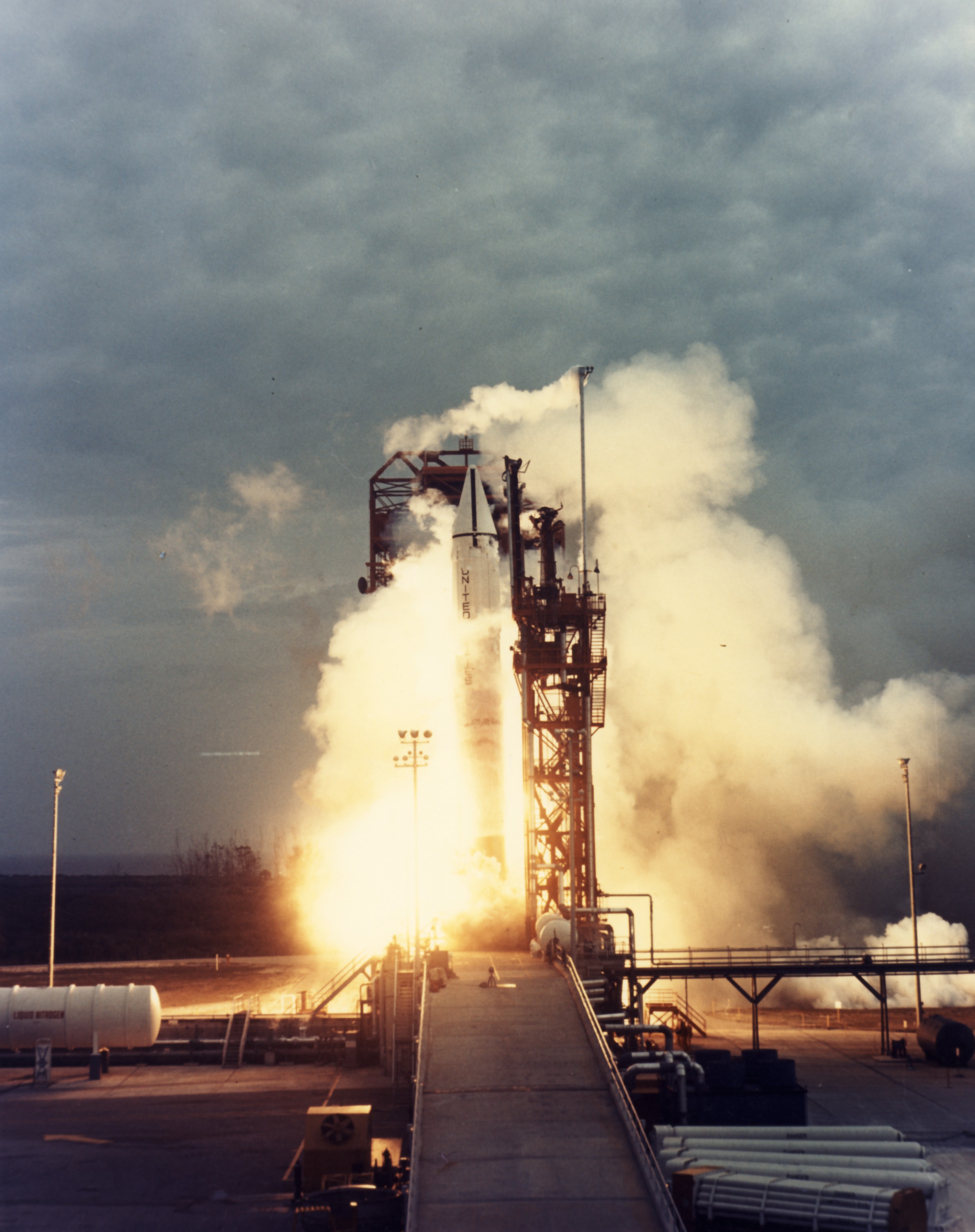
In late 1964 or early 1965, the engineers at the Manned Spacecraft Centre in Houston, Texas initiated the “Fireball Study” to evaluate the effects of the fireball produced during an on-pad explosion of either a Saturn 1B or a Saturn 5. In August 1965, Richard W. High and Robert F. Fletcher of the Flight Engineering Section and Mission Feasibility Branch, respectively, issued their report on the effects of a fireball produced by a Saturn 1B or Saturn 5 explosion.
Although the earlier explosion hazards study had indicated that the fireball posed no major threat to the Command Module itself, NASA engineers became concerned about the effect of radiated heat from a fireball on the parachute shroud lines of a descending Command Module. It would do the astronauts no good to escape the initial explosion and the fireball only to have their shroud lines burn up because of the heat of the fireball. Plummeting to the ground from a thousand meters was no better than being crushed in the initial blast wave.
High and Fletcher used both mathematical models and data gathered from previous on-pad explosions, such as the March 2, 1965 Atlas-Centaur failure, to calculate the size, duration and thermal emissions from a fireball, however, they admitted that some of their conclusions were little more than educated guesses. The two men assumed that virtually all of the propellants in the rockets would be consumed in a fireball, feeding it even after the initial explosion. They based this assumption on the belief that the initial blast wave would completely rupture all of the fuel tanks and that any fuel not consumed in the initial explosion would burn underneath it and feed it.
Based upon these assumptions and their calculations, High and Fletcher determined that the fireball from a Saturn 5 exploding on the launch pad would last for 33.9 seconds. This fireball would rise, but they assumed that it would only begin to rise in the last quarter of its expansion phase, based upon empirical data. They were unable to make an accurate calculation of the maximum surface temperature of the fireball and ultimately settled for the maximum value they obtained from several other studies—1,370 degrees Celsius. They then calculated the radiated heat at a distance of 600 meters from the surface of the fireball. This information was then used in the design of the Launch Escape System.
A towering collision
These studies provided useful data for the requirements for the Launch Escape System and emergency planning but they started with the assumption that the vehicle was exploding. NASA engineers also looked at the question of what set of circumstances could lead to such a situation in the first place. In a conclusion that surprised few rocket veterans, they determined that the most likely cause of an on-pad explosion of a Saturn 5 was a collision with the tower during lift-off. Colliding with the tower would immediately rupture the fuel tanks causing fuel to flow out and contact the hot engine exhaust, leading to an explosion in fractions of a second. Tower collisions had been a major concern for earlier rocket programs, including the Saturn 1. Saturn program officials even placed cameras on the top of the Saturn 1 launch tower looking down to assist in manually determining if the rocket was sliding toward the tower.
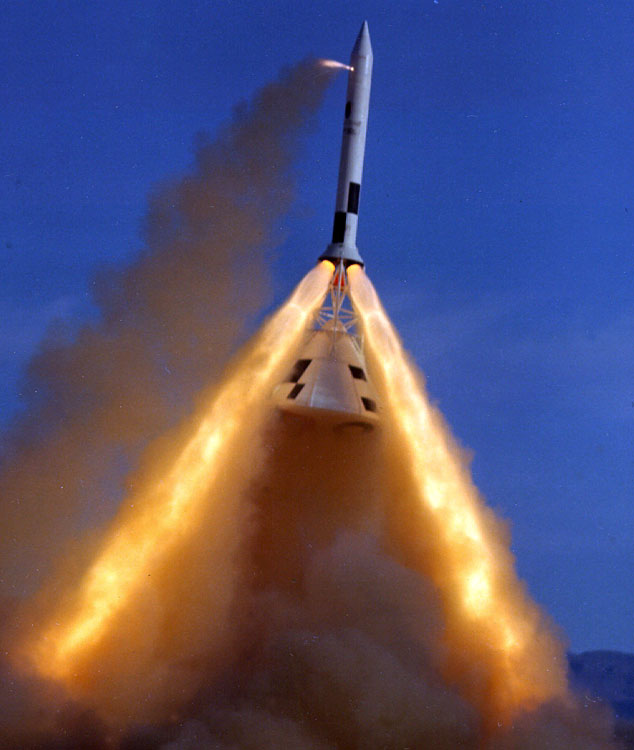
In 1964, David Mowery of the Control Applications Section at Marshall Space Flight Centre in Huntsville, Alabama conducted an evaluation of the Saturn 5 lift-off. The primary purpose of Mowery’s study was not to estimate the chances that a tower collision could take place, but to determine what factors could actually cause it. By knowing this, the designers of the Launch Escape System could develop sensors and electronic equipment for determining when this was about to happen in order to fire the escape rockets.
The Saturn 5 did not simply rest on its launch pad through force of gravity. It was actually held down to the pad by four pairs of hold-down arms which kept the rocket secure until the five F-1 engines achieved their proper thrust, at which time the arms retracted and the rocket lifted off the pad. Mowery noted that due to structural considerations, the Saturn 5 could not be released instantaneously, so Saturn designers were developing a system to release the rocket gradually. The hold-down force would decrease linearly to zero in 0.6 seconds. But this system had to work perfectly or it could create a dangerous situation during lift-off.
Mowery considered seven factors that could disturb the lift-off path of the vehicle. These were: a variation in the hold-down force of plus or minus 15%, a variation in thrust of 4%, engine misalignment, an offset in the vehicle’s centre of gravity, wind, engine failure and an “engine hardover.”
Engine failure and engine hardover, unlike the other factors, were considered vehicle malfunctions and if they occurred for either of the engines closest to the tower, engines 1 and 2, they posed a danger during the initial lift-off phase. In order to steer the giant rocket in flight, the Saturn 5’s huge F-1 engines could gimbal, or move, in several directions, pushed by actuators. In an engine hardover, a failed actuator would push the engine all the way to its maximum gimbal limit, rolling the rocket in the opposite direction and causing it to slide toward the tower. If this happened for one of the inboard engines before the Saturn had risen above the height of the tower, it could push the Saturn 5 toward the tower. It took 7.5 seconds for the Saturn to clear the tower.
Mowery concluded that: “no problem as to tower collision exists for combined disturbances if a malfunction does not occur.” In other words, simply wind or a misaligned vehicle, even in combination, could not cause a tower collision. In addition, neither an engine failure nor an engine hardover for either of the inboard engines alone could cause a tower collision.
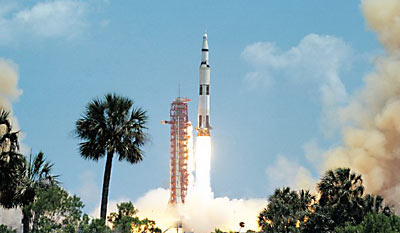
But if any of the other factors occurred combined with an engine malfunction, the vehicle would roll and slide toward the tower and one of its large fins would collide with the tower structure, causing a catastrophe. Probably the most likely non-malfunction factor would be wind pushing the vehicle toward the tower. The Saturn was designed to be capable of launching in windy conditions with no risk of tower collision, provided nothing else went wrong during lift-off. Of the two kinds of malfunction, engine failure posed the greatest overall risk because the vehicle was most susceptible to this failure for the longest period of time. An actuator failure between T minus zero and T plus 5.5 seconds could cause a tower collision but engine failure at any time between T minus zero and T plus 7.5 seconds could cause a collision.
Conclusion
NASA launched thirteen Saturn 5’s without a single catastrophic failure. Although the vehicles did experience occasional engine problems in flight, an engine hardover never occurred and these problems did not greatly affect mission performance. During the launch of the first vehicle, AS-501, Rocco Petrone watched the rocket lift off from his seat in launch control and kept his hand near the button that would close protective covers over the windows if the Saturn 5 exploded. But he always suspected that if something did go catastrophically wrong and the Saturn 5 detonated with the force of a small atomic bomb, he would simply keep watching instead.
Steering the machine once aloft
Once the Saturn powered space craft left earth orbit, how were they steered. There’s no reference out there in space, no horizon, no compass from which to get a reading, no up, no down, no left or right – how was it done.
Remember, this was the 1690s, black and white TVs, no personal computers, no mobile phones, no internet, the UBD was the way we found our way around cities, how were those astronauts expected to stay on track, do a loop of the earth then fling themselves out into space and head for the moon.
The answer will amaze you – see the video below.

Back Go to page: 1 2 3 4 5 6 7 8 9 10 11 12 13 14 15 16 17 18 19 20 Back to Start